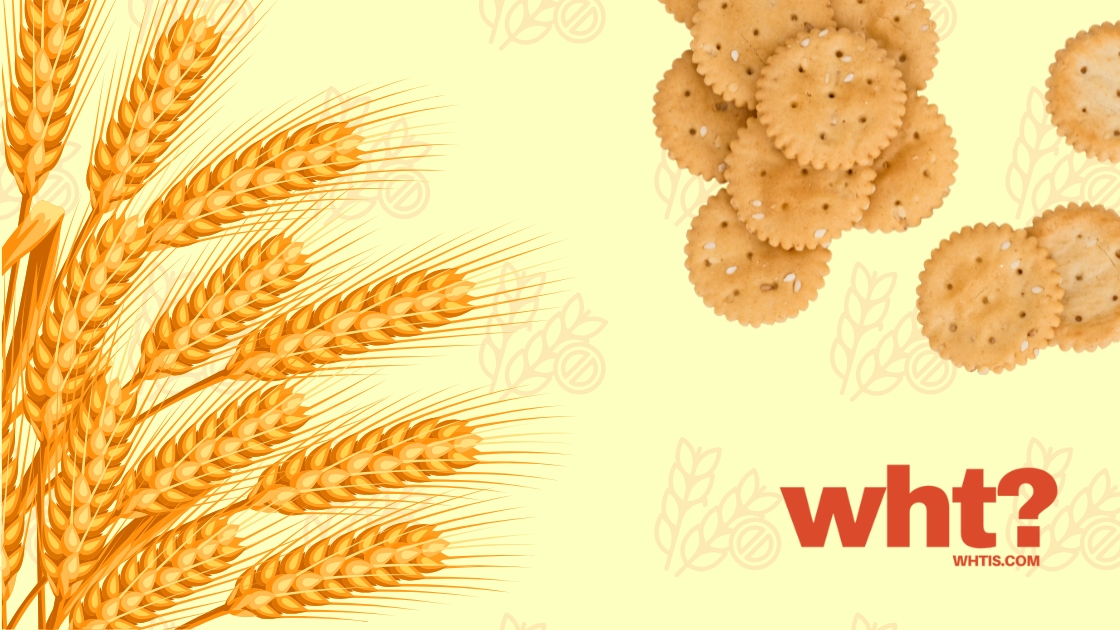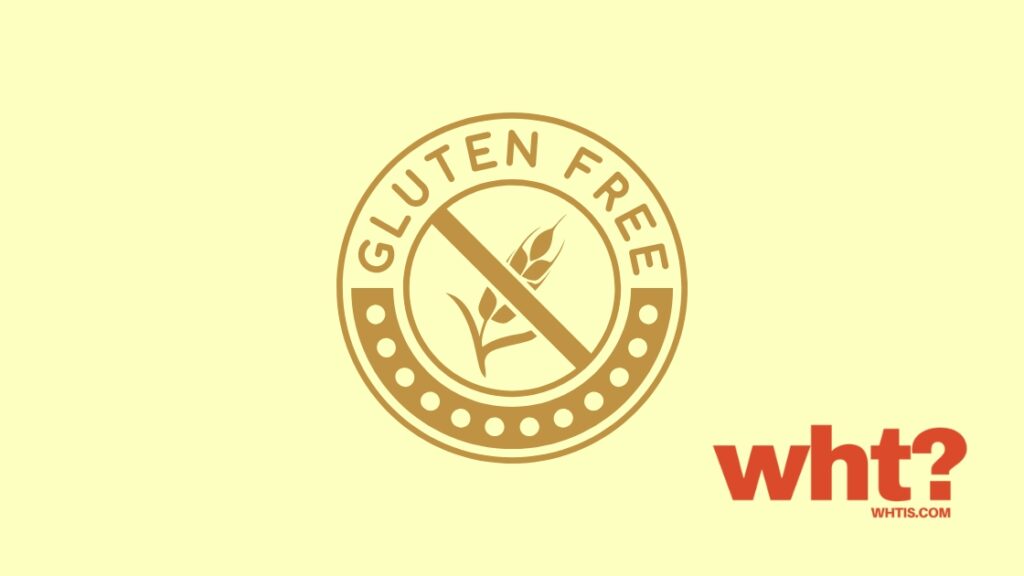
You may have seen some food packages that say “gluten-free” on the packaging. I know you had these questions in your mind.
- What happens when it contains gluten?
- What happens when you overeat these kinds of foods?
- What happens when you eat less of this kind of food?
- Do we need this protein?
We’re going to talk about it. So let’s see what you really know about gluten? And are the things you know wrong or correct?
It is a protein that occurs naturally in wheat, barley, and certain grains. Its function, consisting of the proteins gliadin and glutenin, provides elasticity. But what does this protein provide elasticity to? It gives dough its elasticity. It also gives flour its elasticity when mixed with water.
What foods contain gluten?
This protein is found in the foods listed here, and you can also identify which foods contain it and what types of foods contain it.
1. Bread
Bread made with wheat flour can be considered as a food with a high level of gluten. But nowadays, we can see that gluten-free bread is also available in the market.
2. Pasta
Pasta is also a food made from wheat flour, so it also has a gluten content that needs to be considered. However, since pasta is made from corn and rice flour in the current market, you can consume pasta that has less gluten or is gluten-free.
3. Cakes and Pastries
Wheat flour is an essential ingredient in cakes, muffins, doughnuts, pastries, and many other baked goods. For this reason, these foods are high in gluten content.
4. Beer
Beer is basically a beverage made from barley or wheat, and therefore, beer contains gluten. Gluten-free beers are now available on the market, using corn or rice as a substitute.
05. Cereals
Wheat or barley is the most common ingredient in most breakfast cereals. Therefore, cereals can also be included in the gluten-containing food group.
06. Pizza
Generally, pizza crust is made from wheat flour, so there is a connection between pizza and gluten, but even gluten-free pizza crust can be seen nowadays. Almond and pumpkin flour are used for that.
07. Soy Sauce
Soy sauce is also a food that contains gluten. But a little bit won’t bother you.
08. Snack Foods
Many chips, pretzels, and crackers may contain wheat or related ingredients, so you may need to be a little careful with snacks if you’re following a gluten-free lifestyle.
09. Salad Dressing
Soy sauce or malt vinegar is added to salads as a thickener. If you are eating a salad while following a gluten-free diet, check it to see if it is gluten-free.
10. Cookies
It’s impossible to be a cookie fan and be gluten-free. Because wheat is a key ingredient in cookies.
Are there any gluten-free foods?
We have many gluten-free foods that are naturally available to us. There are even flour substitutes for wheat flour. All that is required is to find out. However, you should be careful when buying foods labelled as gluten-free because some foods are naturally gluten-free. If so, it won’t be good for your wallet. Here are some naturally gluten-free foods.
- Rice
- Fresh vegetables
- Fresh fruits
- Buckwheat
- Quinoa
- Potatoes
- Corn
- Millet
- Eggs
- Fish & Seafood
- Coconut
Is consuming too much gluten-containing food harmful?
The adverse effects of gluten consumption cannot be precisely classified as such. Because consuming too much gluten may have some impact on some people, but it may not affect others. The following conditions can be identified as risk factors, especially for people who are sensitive to gluten and those who suffer from conditions such as celiac disease.

Risk of digestive problems
This condition is mainly faced by people who are sensitive to gluten. Conditions such as bloating and constipation can be considered as consequences of this.
Risk of nutrient deficiencies
Gluten-rich foods lack many essential nutrients, such as minerals and vitamins, so sticking to a gluten-containing diet is not enough.
Risk of weight gain
Foods that are high in gluten, such as bread and pastries, are high in calories and can lead to weight gain.
Risk of developing chronic diseases
Due to the high glycemic index found in gluten-rich foods, there is a higher risk of developing conditions such as type 2 diabetes, heart disease and metabolic disorders.
Risk of inflammation
People with gluten sensitivities and immune disorders may develop conditions such as inflammation due to excessive consumption of gluten-containing foods. This can lead to fatigue and joint pain.
How to go on a gluten-free diet?
Going on a gluten-free diet is not always practical. However, it is possible to minimise the consumption of foods containing gluten as much as possible. Eating foods containing gluten is not really dangerous for most people, but it can be a concern for people with gluten sensitivity and immune system problems. Here are some gluten-free recipes.

1. Sweet Potato Hash
Ingredients:
- sweet potato
- Bell pepper
- 1 egg
- Olive oil
- Salt
- pepper
Dice the bell pepper and sweet potato. Then fry it. Add salt and pepper, put the fried egg on top and enjoy.
02. Chia Seed Pudding
Ingredients:
- 1/4 cup chia seeds
- 1 cup almond milk
- Honey
- Fruits and nuts
Mix chia seeds with almond milk and honey, refrigerate overnight, and serve with fruit and nuts.
03. Chicken Salad With Lettuce Wraps
Ingredients:
- Shredded chicken
- 1/4 cup mayonnaise
- Lettuce leaves
- Salt
- Pepper
Add salt and pepper to the mayonnaise, mix, then add the chicken, wrap in lettuce and serve.
04. Berry Smoothie
Ingredients:
- 1/2 cup frozen berries
- 1 banana
- 1 cup almond milk
- 1 tablespoon honey
Blend all the ingredients until smooth. Then pour into a glass and enjoy your drink.
05. Gluten-free pasta with Marinara Sauce
Ingredients:
- 1/4 cup Parmesan cheese
- 2 cups marinara sauce
- Gluten-free pasta
Cook the pasta as directed on the pasta package. Then enjoy with marinara sauce and parmesan cheese.
The recent gluten-free trend
When you go to the grocery store, you probably see packages labelled as gluten-free. Today, it has become a kind of marketing strategy. Gluten only affects those with gluten sensitivity and the other sensitivities mentioned above. Sometimes people don’t even know what gluten is. But because of the gluten-free trend on social media, everyone is starting to consume gluten-free products. Sometimes you may see foods labelled as gluten-free even though they don’t contain gluten at all. If you’re thinking carefully about your diet, you should remember that it doesn’t seriously affect your diet. However, if you suffer from gluten sensitivity and other types of dietary problems, you should be careful. You can’t lose weight just by going gluten-free; you have other things to do. So, cutting out this protein is a good habit, but it’s not enough. Adopt the new trends but with awareness.
See you soon with another article like this, keep in touch with whtis and enjoy.





Leave a Reply